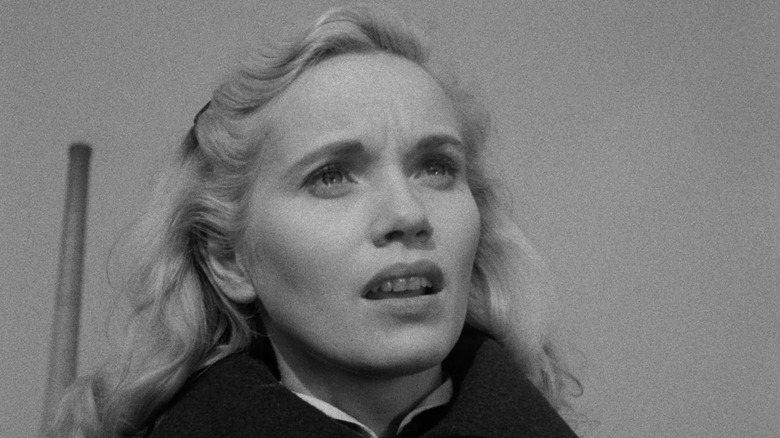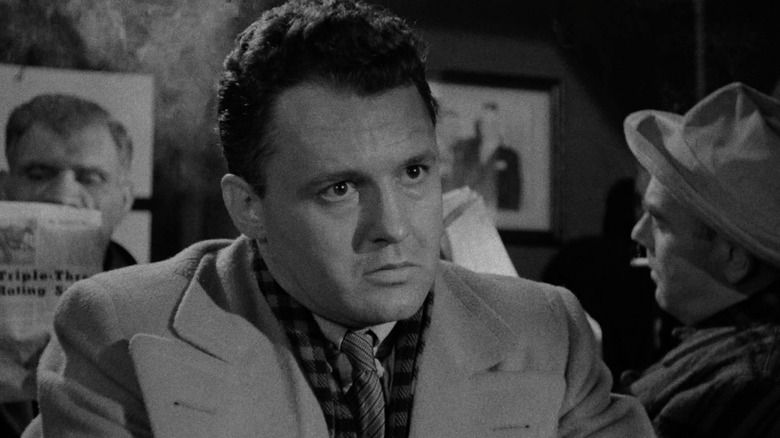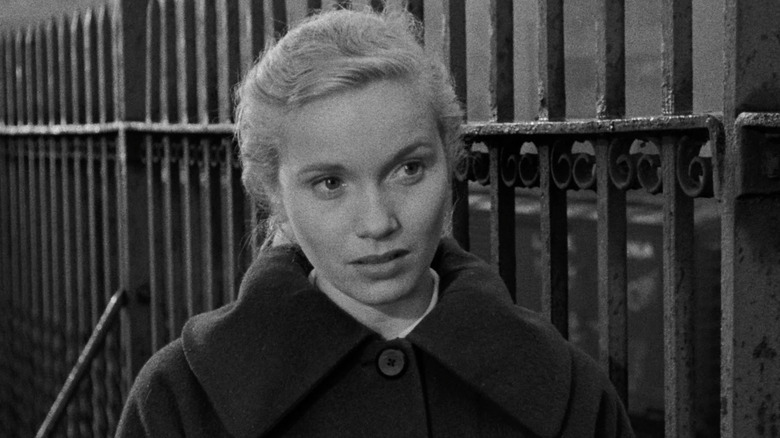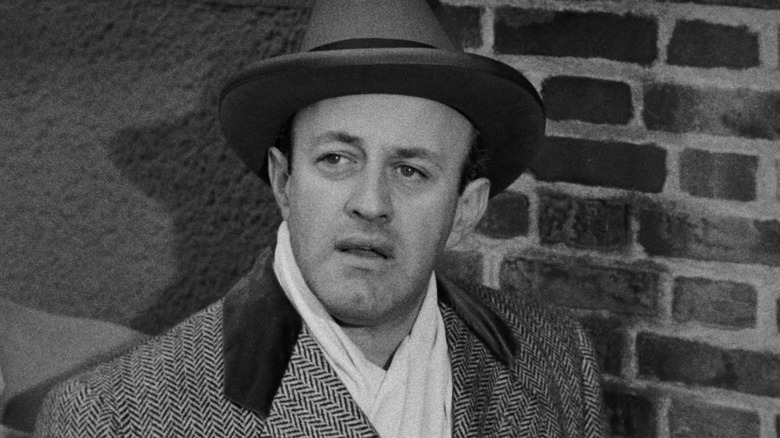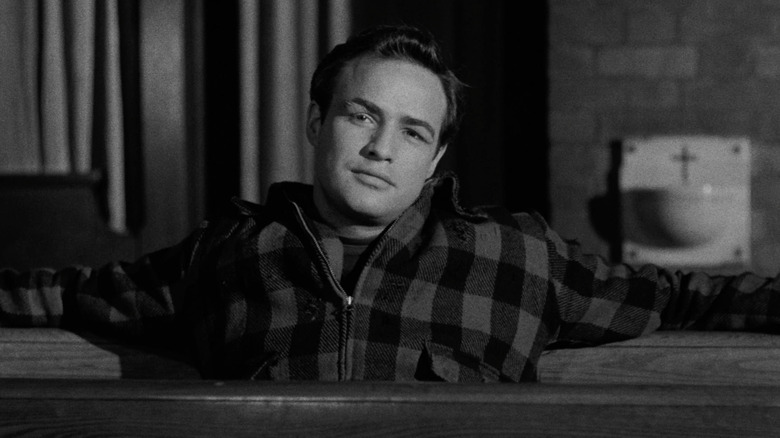Why On The Waterfront Needed Unknowns To Fill Its Most Important Roles
There is an old adage about filmmaking that says 90% of the director's job is casting. The reasoning behind this comes from the fact that during a fictional, narrative feature, the audience will spend the vast majority of the time looking at the faces on screen. The characters are our entry point to the cinematic world laid out in front of us. If the people you put in front of the camera are compelling, unique, and, more than anything, truthful, you will be able to take the audience wherever you wish. While I think the percentage is certainly a little hyperbolic, I do not think you can undersell the importance of casting.
What directors look for in casting varies wildly from person to person. Some just want a collection of the most attractive people they can find to dazzle the audience. Some want to surround one or two movie stars with a collection of warm, familiar faces. Then there are the folks who want to create characters with actors that audiences have little to no prior connection with, preferring to go with unknowns.
Casting unknown actors is something Hollywood never wants to do. They believe that so much of the box office draw is the famous names you are able to put on a poster, and to a certain extent, they are right — especially back when the term "movie star" really meant something. But then you enter into a conundrum: How do you make new stars if you aren't giving new people a chance? One of those directors who loved giving actors those chances was Elia Kazan. If they became stars, that was a nice byproduct, but what Kazan was looking for in pictures like "On the Waterfront" was a sense of verisimilitude and unpredictability.
No baggage
Rod Steiger and Eva Marie Saint both received Oscar nominations for their performances in "On the Waterfront," with Saint taking home the statuette for Best Supporting Actress. This was just Steiger's second time appearing in a movie, and even more impressive, it was Eva Marie Saint's first ever film. Both of them had studied at the famed Actors Studio, which Elia Kazan co-founded. They were theatre people, treading the boards on and off-Broadway where they honed the Method acting techniques the Studio taught.
For casting "On the Waterfront," Kazan looked to these actors to play the key roles of Terry Malloy's brother and love interest, respectively, instead of going to some Hollywood-bred youngsters. These were unfamiliar faces to audiences outside of the New York theatre scene, and Kazan hoped to use that unfamiliarity to throw audiences off-balance. On an episode of the BBC Two series "Talking Pictures" about his picture, he said of casting unknowns:
"If you have Rock Hudson in the picture you know it's going to turn out well, you know he's not gonna get killed in the second reel, nothing bad can happen to him, and you also know how the story will turn out, it can only turn out one way. And I think for a story really to have the good qualities of any story – that is surprise and unpredictability – it's better to cast fresh people."
Movie stars certainly have their place, but they aren't right for every project. Kazan is right that you bring in a whole host of expectations and baggage when you see a face you recognize in a film, particularly because these performers have carefully crafted personas and brands to make audiences show up for their work again and again. For a street-level story like "On the Waterfront," that wouldn't suffice.
A youthful hunger
Outside of being able to take advantage of the audience's expectations when it comes to casting, Elia Kazan also liked casting younger actors for the simple fact that they were young people. He firmly believed in the energy and vivacity that distinctly comes from youthfulness. In "Talking Pictures," Kazan goes on to say about fresh-faced performers:
"I also like to work with young actors because they come hungry, they come to work, they come ... they're eager to make good, and they come every day and they're on time and they're eager and they're looking for something and so on, so on. And then I think it's just fun to discover people. I just enjoy that."
Considering Kazan would go on to direct pictures like "East of Eden" and "Splendor in the Grass," both of which are hallmarks of teenage life, this attraction to working with young actors makes a whole lot of sense. Rod Steiger, Eva Marie Saint, James Dean, Natalie Wood, and Warren Beatty were all in their 20s when they appeared in the Oscar winner's films, as was Marlon Brando when he first worked with Kazan prior to "On the Waterfront."
That youth also feeds into the unpredictability he mentioned earlier. Our emotions tend to be a bit more volatile in our younger years, since we haven't figured out who we are or what our place in the world is yet (not that we do when we're older either, but it gets clearer). That allows for the possibility of spontaneous emotional reactions that age could mellow out. I also have no doubt that Kazan appreciated the youthful eagerness to please as a way to more easily mold performances to his liking.
If they're known, they're character actors
Not every face in "On the Waterfront" is brand new though, but they were not big-name movie stars either. Outside of Rod Steiger and Eva Marie Saint in the main supporting cast, we have Lee J. Cobb and Karl Malden, both of whom also got Oscar nominations for their performances (talk about an incredibly clogged Best Supporting Actor category that year). Both had been working character actors for over a decade in film by the point this picture comes around, but to say that they were major draws would be a lie.
These were actors who people hired for the pure and simple fact that they were tremendous actors. Cobb's major claim to fame was starring as Willy Loman in the original Broadway production of Arthur Miller's classic play "Death of a Salesman." Malden, meanwhile, was a regular Elia Kazan player who appeared in the stage productions of "All My Sons" and "A Streetcar Named Desire," along with the film adaptation of the latter for which he won the Academy Award for Best Supporting Actor.
Character actors are the perfect middle ground between a total unknown and a bankable star. These actors are semi-recognizable and can be placed into a variety of genres, time periods, social classes, or anything else without overturning the apple cart of the movie. What Elia Kazan does, though, is he takes these people would normally be fifth or sixth-billed on a poster and makes them second and third-billed, thus upending an audience's expectations about what kind of people can truly impact a story. Character actors are so often on the periphery that they play types an not people. In "On the Waterfront," they are more than people. They are the film's lifeblood.
A star, but an actor first
We've had all of this talk about utilizing little-known actors in film, but "On the Waterfront" has a major movie star: Marlon Brando, who took home his first Oscar for his performance. Surely, hiring Brando as the protagonist Terry Malloy flies in the face of what Elia Kazan was trying to do with this particular film. Well ... yes and no.
Marlon Brando and Eliza Kazan go back to their time at the Actors Studio. The two had been creative collaborators for quite a bit by the time "On the Waterfront" came around. This was just Brando's sixth film, but it was the third directed by Kazan. What he did with Steiger and Saint with this picture, Kazan did with Brando three years earlier, casting him in "A Streetcar Named Desire." In Hollywood, Brando was a nobody they thought no one would like because he mumbled. Of course, that performance almost singlehandedly changed what we thought film acting could be, and people have been chasing it ever since. When that film hit, Brando immediately shot up to superstardom.
What makes Brando an odd movie star was that he became incredibly famous because he was a great actor. His allure was his talent, as opposed to his charm, his glamor, or his looks (though him being handsome didn't hurt). Brando was an actor first and foremost, and that allowed him the ability to operate as a character actor in leading man spaces. He could be unmistakably Brando while also losing himself in the role. If Elia Kazan needed a name to get "On the Waterfront" made, Marlon Brando was the only one who could bridge that gap.
Some say 90% of directing is casting, and Elia Kazan sure knew how to do that, from the top-down.
